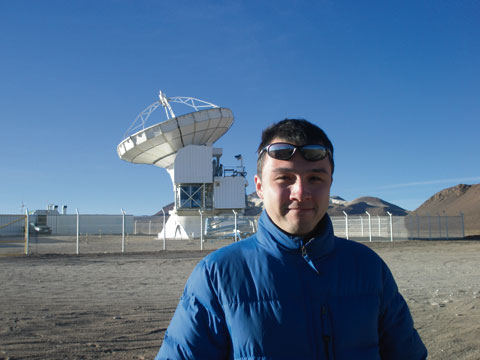Dr. Akira Endo has been awarded a Veni grant to develop a detector for studying the evolution of the early universe.
“Smaller galaxies combine by colliding. Stars and gas mix in a violent process, creating new stars and adding mass to the black hole in the centre.” Astronomer and physicist Akira Endo describes the processes as if he had witnessed them himself. But in fact, knowledge about the universe at the age of between two and seven billion years old is limited, owing to a lack of satisfactory observations. Dust clouds hide collisions from the view of optical telescopes, while light from the stars heats the dust, causing it to emit sub-millimetre waves. Endo argues that much can be learned from studying this radiation, if that is you are able to measure its wavelength. This is the key to the ‘redshift’ (the Doppler-like frequency shift due to the light source’s velocity) of the radiation, and hence to the age of the observed galaxies. “Current cameras produce number counts of sub-millimetre galaxies”, says Endo. “But they cannot determine the redshifts necessary to convert number counts into a star formation history.”
The reason for this is simply because at present no broadband spectrometer for sub-millimetre radiation exists. Endo has therefore proposed to develop such a spectrometer at the faculty of Applied Sciences, in collaboration with astronomers from Leiden University and the Netherlands Institute for Space Research (SRON). The Netherlands Organisation for Scientific Research (NWO) has funded the project with a grant worth 250,000 euro, and the Japan Society for the Promotion of Science has contributed another 100,000 euro.
The superconducting detector that Endo plans to develop is called a kinetic inductance detector (or KID) and consists of an antenna and a tuneable microwave resonator. With 10,000 KIDs, each tuned to a subsequent frequency, Endo hopes to analyse the radiation coming from those early galaxies at frequencies ranging from 300 to 1000 gigahertz. By the time this three-year project ends, Endo hopes to have conducted the first measurements himself.
Do you have a question or comment about this article?
j.w.wassink@tudelft.nl


Comments are closed.